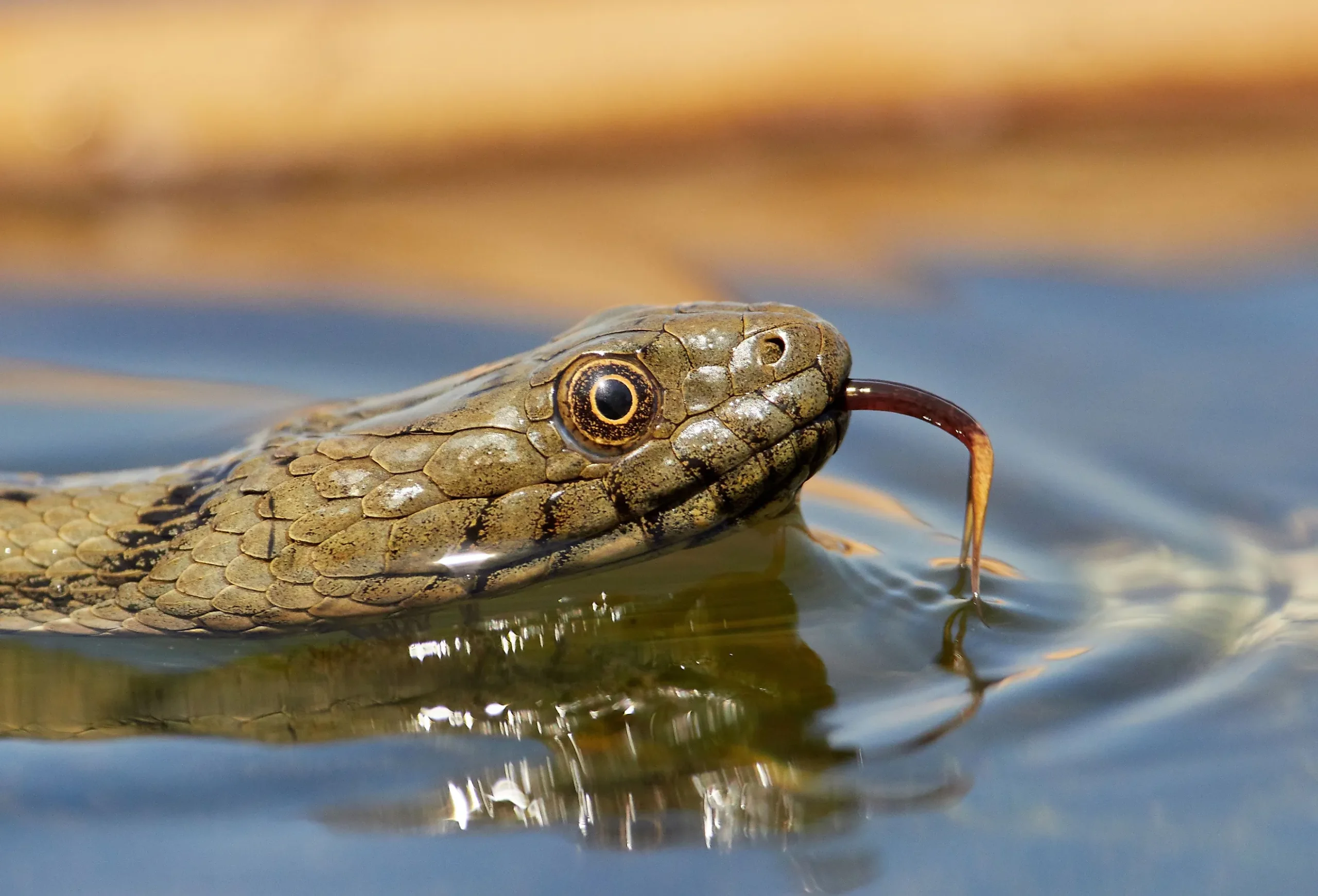Florida, the “Sunshine State,” is a land of stunning beaches, vibrant coral reefs, and diverse wildlife. But beneath the idyllic surface lurks another resident: the snake. With 46 native snake species and a few established non-native populations, Florida offers ample opportunity to encounter these fascinating reptiles.
While not all encounters are guaranteed, some lakes in the state are known for their higher snake populations. Here, we explore the top 5 snake-infested lakes in Florida, delving into the species you might encounter and offering tips for safe and respectful observation. All the information in this article is based on the report by World Atlas.
These are the Most Snake-Infested Lakes in Florida
Lake Okeechobee
Lake Okeechobee nicknamed the “liquid heart” of Florida, takes the top spot for boasting 34 of the state’s 46 native snake species. Here, you’ll find everything from the non-venomous Florida green water snake and brown water snake to the more formidable cottonmouth moccasin.
Cottonmouths are semi-aquatic snakes, known for their triangular head and distinctive white patch under the chin. While they typically avoid confrontation with humans, their bites can be very painful and potentially fatal, so staying alert while boating or fishing is crucial.
Incidents and Statistics
According to the Florida Fish and Wildlife Conservation Commission (FWC), there have been numerous reports of snake sightings and encounters around Lake Okeechobee. In 2023, there were over 150 reported sightings of Water Moccasins alone.
Safety Tips
- Avoid walking through tall grass or marshy areas without proper footwear.
- Be cautious when fishing or boating, especially near the lake’s edges
Lake Istokpoga
Nestled in central Florida, Lake Istokpoga is a haven for birdwatchers, but it also attracts a different kind of aerial observer – the water moccasin. Also known as cottonmouths, these semi-aquatic vipers are a common sight here, basking on logs or swimming through the shallows. Their abundance can be attributed to the numerous osprey nests around the lake. These birds of prey provide a reliable food source for the snakes in the form of eggs and young birds.
Beyond the cottonmouths, Lake Istokpoga offers encounters with various non-venomous water snakes like the eastern mud snake and the Florida water snake. The lake’s healthy ecosystem also supports diverse fish and amphibian populations, providing a plentiful food source for this diverse snake community.
Lake Kissimmee
Lake Kissimmee, situated in Central Florida and part of the Kissimmee Chain of Lakes, is well-known for bird watching and fishing. However, it also hosts a significant snake population. The lake’s snake species include the venomous and often aggressive Florida Cottonmouths, commonly found in wetlands, and the non-venomous Rat Snakes, which are frequently mistaken for more dangerous species due to their size.
In 2023, the Florida Fish and Wildlife Conservation Commission (FWC) reported 120 snake encounters in the Lake Kissimmee area, with Cottonmouths being the most frequently spotted.
Lake Apopka
Lake Apopka, near Orlando, is Florida’s fourth largest lake and has a history of pollution issues that have created a suitable habitat for various snake species. Among these, the non-venomous Brown Water Snakes are often mistaken for Water Moccasins due to their similar appearance, while the venomous Eastern Diamondback Rattlesnakes are found in the surrounding areas, posing a significant concern. The Florida Fish and Wildlife Conservation Commission (FWC) reported 95 snake sightings around Lake Apopka in 2023, indicating an increase in snake-related incidents.
Conclusion
Florida’s lakes are stunning and offer many recreational activities, but they are also home to various snake species that can be dangerous. By knowing which lakes have the most snakes and following safety guidelines, you can appreciate Florida’s natural beauty while reducing the risk of snake encounters. Stay informed, take necessary precautions, and respect wildlife to ensure a safe and enjoyable time in Florida’s great outdoors.
Reference articles:
1.https://a-z-animals.com/animals/snake/snake-facts/snake-infested-lakes-in-the-united-2.states/https://floridapoisoncontrol.org/the-most-snake-infested-lakes-in-florida/




